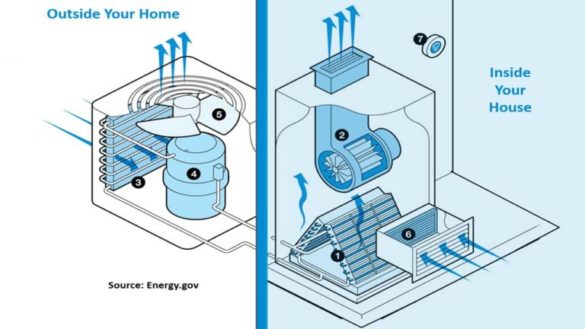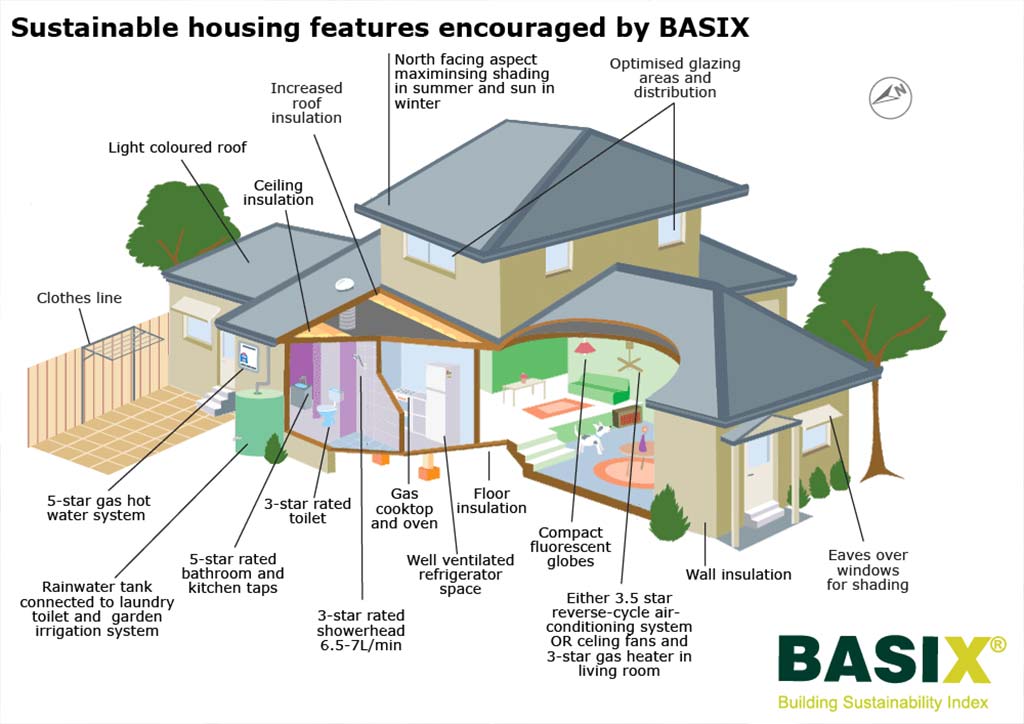We've unearthed the article pertaining to Anatomy of a House: Understanding the Components down the page on the web and thought it made good sense to quickly share it with you here.

Comprehending just how your home's plumbing system works is important for every property owner. From supplying tidy water for alcohol consumption, food preparation, and showering to securely eliminating wastewater, a well-kept plumbing system is crucial for your family members's wellness and convenience. In this detailed guide, we'll explore the intricate network that makes up your home's pipes and deal ideas on maintenance, upgrades, and dealing with common issues.
Intro
Your home's pipes system is greater than simply a network of pipes; it's a complex system that guarantees you have accessibility to clean water and efficient wastewater elimination. Understanding its elements and how they work together can help you prevent expensive repair work and ensure everything runs efficiently.
Fundamental Parts of a Pipes System
Pipes and Tubes
At the heart of your pipes system are the pipes and tubes that bring water throughout your home. These can be made from various products such as copper, PVC, or PEX, each with its advantages in terms of longevity and cost-effectiveness.
Fixtures: Sinks, Toilets, Showers, etc.
Components like sinks, toilets, showers, and bath tubs are where water is utilized in your home. Recognizing exactly how these fixtures attach to the plumbing system helps in detecting problems and intending upgrades.
Shutoffs and Shut-off Points
Shutoffs control the circulation of water in your plumbing system. Shut-off shutoffs are vital during emergency situations or when you need to make fixings, enabling you to isolate parts of the system without interrupting water flow to the whole house.
Water Supply System
Key Water Line
The main water line attaches your home to the community water or a personal well. It's where water enters your home and is distributed to different fixtures.
Water Meter and Stress Regulatory Authority
The water meter procedures your water use, while a pressure regulatory authority guarantees that water moves at a risk-free stress throughout your home's pipes system, avoiding damages to pipes and components.
Cold Water vs. Hot Water Lines
Comprehending the difference in between cold water lines, which provide water directly from the primary, and hot water lines, which bring heated water from the water heater, aids in fixing and preparing for upgrades.
Drainage System
Drain Pipes Pipes and Traps
Drain pipes lug wastewater away from sinks, showers, and bathrooms to the sewage system or septic tank. Traps protect against sewer gases from entering your home and likewise catch debris that can trigger blockages.
Air flow Pipes
Air flow pipes permit air into the water drainage system, avoiding suction that can slow down water drainage and cause catches to empty. Appropriate ventilation is necessary for keeping the stability of your pipes system.
Significance of Appropriate Water Drainage
Guaranteeing correct drainage stops back-ups and water damage. On a regular basis cleaning drains pipes and keeping catches can prevent expensive repairs and prolong the life of your pipes system.
Water Heating System
Kinds Of Hot Water Heater
Water heaters can be tankless or conventional tank-style. Tankless heating systems warmth water on demand, while storage tanks save heated water for instant usage.
Updating Your Plumbing System
Reasons for Updating
Updating to water-efficient fixtures or replacing old pipes can enhance water top quality, reduce water expenses, and raise the worth of your home.
Modern Plumbing Technologies and Their Benefits
Explore technologies like wise leakage detectors, water-saving commodes, and energy-efficient water heaters that can save money and decrease ecological impact.
Cost Considerations and ROI
Determine the ahead of time prices versus long-term cost savings when thinking about plumbing upgrades. Lots of upgrades spend for themselves via decreased energy costs and less fixings.
How Water Heaters Connect to the Plumbing System
Comprehending exactly how hot water heater link to both the cold water supply and warm water circulation lines aids in detecting concerns like insufficient warm water or leakages.
Upkeep Tips for Water Heaters
Frequently flushing your water heater to remove debris, inspecting the temperature settings, and inspecting for leakages can prolong its lifespan and improve power effectiveness.
Typical Plumbing Concerns
Leakages and Their Causes
Leaks can take place as a result of aging pipes, loosened installations, or high water pressure. Dealing with leakages immediately avoids water damage and mold and mildew development.
Clogs and Blockages
Obstructions in drains and toilets are usually triggered by flushing non-flushable things or an accumulation of grease and hair. Making use of drainpipe screens and bearing in mind what drops your drains pipes can stop blockages.
Indications of Plumbing Troubles to Expect
Low tide pressure, slow drains pipes, foul odors, or abnormally high water expenses are signs of potential pipes issues that ought to be addressed without delay.
Pipes Maintenance Tips
Regular Examinations and Checks
Arrange annual pipes assessments to catch concerns early. Try to find indications of leaks, deterioration, or mineral accumulation in faucets and showerheads.
Do It Yourself Maintenance Tasks
Straightforward tasks like cleaning tap aerators, checking for commode leakages using color tablet computers, or insulating revealed pipes in cold climates can protect against major pipes problems.
When to Call an Expert Plumber
Know when a pipes issue calls for professional competence. Attempting complicated repairs without proper understanding can lead to more damages and higher repair costs.
Tips for Lowering Water Usage
Straightforward practices like fixing leaks promptly, taking shorter showers, and running complete loads of washing and dishes can save water and reduced your utility costs.
Eco-Friendly Plumbing Options
Take into consideration sustainable pipes products like bamboo for flooring, which is durable and green, or recycled glass for counter tops.
Emergency situation Preparedness
Actions to Take Throughout a Plumbing Emergency situation
Know where your shut-off valves are located and just how to turn off the water system in case of a burst pipe or significant leak.
Significance of Having Emergency Situation Calls Useful
Maintain call information for regional plumbers or emergency solutions conveniently available for quick feedback during a plumbing dilemma.
Ecological Impact and Conservation
Water-Saving Components and Devices
Installing low-flow faucets, showerheads, and bathrooms can dramatically lower water usage without compromising efficiency.
Do It Yourself Emergency Fixes (When Appropriate).
Short-term repairs like utilizing air duct tape to spot a leaking pipe or putting a container under a trickling tap can minimize damage up until an expert plumbing professional gets here.
Verdict.
Understanding the anatomy of your home's pipes system empowers you to maintain it efficiently, conserving money and time on fixings. By adhering to routine maintenance routines and remaining informed concerning modern-day plumbing innovations, you can guarantee your pipes system runs successfully for several years ahead.
The Anatomy of Your Home s Plumbing System
Understanding the anatomy of your home s plumbing system is essential for any homeowner. It not only helps in identifying potential issues but also facilitates effective communication with professionals when repairs or upgrades are needed. Your home s plumbing system is more than just pipes and faucets; it s a complex network that ensures the efficient and hygienic flow of water in and out of your house. In this blog, we ll dissect the crucial components of your home s plumbing system. For those in Antelope Valley, Brock Plumbing is your trusted partner for all your plumbing needs, ensuring your system functions smoothly and efficiently.
Water Supply System
Main Water Line: This is where your home s plumbing system begins. The main water line connects your home to the public water supply or a private well. Pipes and Shut-off Valves: Pipes distribute water throughout your home. Shut-off valves are crucial for controlling the flow of water and making repairs without shutting off the entire system. Drainage System
Drain Pipes: These pipes carry waste and water away from sinks, toilets, and showers. Vents: Vents allow sewer gases to escape and help maintain proper pressure in the drainage pipes, ensuring efficient flow of wastewater. Traps: Every fixture has a trap, a U-shaped pipe that holds water and prevents sewer gases from entering your home. The most common is the P-trap under sinks. Fixtures and Appliances
Fixtures and appliances are the most interacted with parts of your plumbing system. They include sinks, toilets, showers, dishwashers, and washing machines. Each fixture and appliance has its own supply and drainage connection, ensuring they receive clean water and can dispose of wastewater effectively.
Water Heating System
Your water heater is a crucial component, providing hot water to various fixtures and appliances in your home. It can be tank-based or tankless, with each type having its own set of advantages and maintenance requirements. Regular maintenance is essential to ensure efficient operation and extend the lifespan of the unit.
Sump Pump
In areas prone to flooding or with high water tables, a sump pump is an essential part of the plumbing system. It s installed in the lowest part of your basement or crawlspace and pumps out water that accumulates, preventing flooding and protecting your home from water damage.
Septic System
Homes that are not connected to a municipal sewer system have a septic system and an underground wastewater treatment structure. Understanding how to maintain your septic system is crucial to prevent backups, odors, and early system failure.
Conclusion
Your home s plumbing system is a complex and essential network, ensuring the efficient and hygienic flow of water in and out of your property. Understanding its key components helps in maintaining it properly and identifying issues before they escalate into major problems. For residents in Antelope Valley, Brock Plumbing is dedicated to providing top-notch services, ensuring that every part of your plumbing system is in perfect working order. Trust our team of professionals to handle all your plumbing needs, ensuring your home remains comfortable, safe, and well-maintained.
https://brockplumbinganddrains.com/blog/the-anatomy-of-your-homes-plumbing-system/

As an enthusiastic person who reads about Anatomy of a House: Understanding the Components, I think sharing that piece of content was essential. For those who enjoyed reading our article if you please be sure to pass it around. Thank you for taking the time to read it.
Website